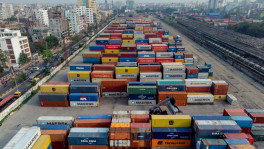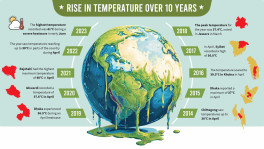Focus on boosting poor’s purchasing power
The government’s consumer spending has been limited to 5% of the GDP for several years. Through the implementation of small projects, money has to reach the poor across the country

Consumer spending has always been the lifeblood of the economy. Consumer demand also plays a big role in reviving the economy from any crisis. If consumers do not have the purchasing power, who will the entrepreneurs create products for? And how will they continue to employ people?
To get a detailed idea of how consumer demand will be affected by the uncontrolled rise in prices of consumer goods and services, and how the overall economy will be impacted, we need to first look at the type of products that saw price increases.
In recent times, the prices of food and consumer goods have risen the most. When prices of such products go up, consumers can not reduce consumption. Rather they are forced to buy daily necessities even if that means breaking the savings or reducing consumption of other goods.
There is also investment in products which are not being bought as a result of inflation. Workers also work in those factories. Now the question is: how will the entrepreneur of that product bring back the investment? And how will they pay the worker's salary?
In recent times, investment and employment in the production of luxury products including electric and electronics has increased in our country. All these industries will be hurt if all the income of the lower and middle class goes to buy daily necessities.
Under normal circumstances, entrepreneurs expect a little inflation to enjoy a bigger profit margin. Entrepreneurs always see the profit when the price of the product goes up. However, due to the increase in prices, the purchasing power decreases and in effect pushes the entrepreneurs into disarray.
In the current situation, the flow of money in the hands of poor people has to be increased to control inflation. As a result, the lives of the poor will be saved, and the industrial establishment and the economy as a whole will be protected by creating consumer demand.
And the government has to take the responsibility.
The government's consumer spending has been limited to 5% of the GDP for several years. Through the implementation of small projects, money has to reach the poor across the country.
Doing so will create new consumer demand. Entrepreneurs will have the courage to invest anew to increase supply if demand increases. As a result, demand will increase anew through employment and increase in income.
There is a multiplier effect of increasing consumer demand in the economy. In order to ensure this benefit, the government has to increase the flow of money from one direction or another.
With the budget in front of us, we need to focus on increasing the per capita allocation, including increasing the coverage of social security to increase the purchasing power of the poor.
Apart from that, even if the daily commodities including rice, oil and pulses can be reached among the poor people at discounted prices, the overall purchasing power will continue.
Dr Sayema Haque Bidisha is the Research Director, Sanem


 Keep updated, follow The Business Standard's Google news channel
Keep updated, follow The Business Standard's Google news channel
















